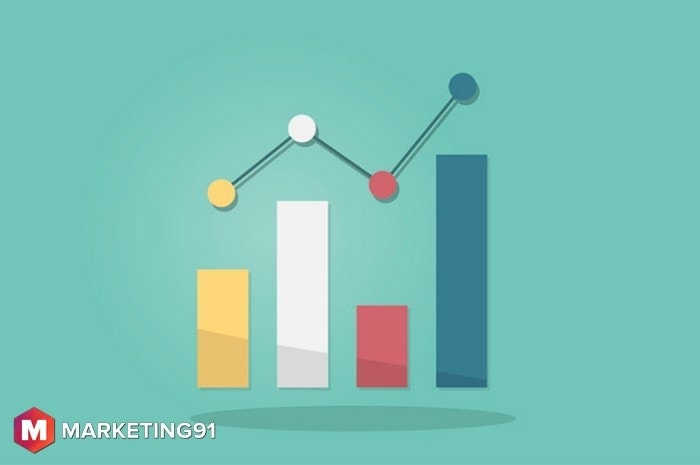When the data is collected by someone else and it is being used by someone other than the collector, then it is known as secondary data. Secondary data is important in the case of secondary research.
Table of Contents
What is Secondary Data?
The primary advantage of secondary data is that a lot of time would be saved which would otherwise be spent on the collection of primary data and this is particularly useful in case of quantitative data. This data can provide higher and larger database quality which would be impossible for any individual researcher to collect on his own.
Secondary data is considered to be essential by many researchers because it would be impossible for a researcher to go in the past and analyze the developments.
A careful review of secondary data is essential and it should be scrutinized very minutely because it may be possible that the secondary data is inadequate or not suitable for the particular problem that the researcher is currently working on. One should always question the meaning and limitation of the secondary data and should not take it for its face value.
Characteristics of Secondary Data
The researcher should never take the secondary data and this it satisfies the following characteristics
1) Data reliability
The secondary data that is to be used should be reliable. The data connection analysis should be done and questions like who collected the data, what were the sources of the collected data, when was the data collected and what were the methods used to collect it, what’s the desired level of accuracy achieved and if there any bias by the compiler.
These are the primary questions that need to be answered before using any data. Answering these questions will help to establish reliability on the secondary data.
2) Suitability of the data
The data should be suitable for the research that is to be conducted because the data that is suitable for one research may not be necessary is suitable for other research. This is why the data that is found should be scrutinized properly and should not be used by the researcher directly.
The researcher should carefully see the terms and units of collection and the time at which the data is collected from the primary source. Careful analysis will reveal the scope and the object along with the nature of the original query for which the research was conducted.
If this query is matched with the queries that are currently faced by the researcher then the data can be used but if any of it does not match then the data should not be used for the secondary data analysis.
3) Data sufficiency
If the present problem of the researcher is not answered by the data then it should be considered as inadequate and should be refrained from using by the researcher. The data will not be considered sufficient if the scope of the researcher is narrower or wider than the secondary data that is collected.
It would be very risky to use the data if it simply matches some part of the query posed by the researcher because of chances of error in the present research increasing drastically.
Secondary Data collection methods
Primarily there are two different methods of collecting secondary data:
- Quantitative methods
- Qualitative methods
Qualitative data is the one in which interviews and focus groups are used to collect the secondary data; while quantitative is the one that analyzes census, statistics, and other related numerical databases.
1. Printed Sources
There is a lot of material published every day and every month from various sources. Analyzing their credibility the published data can be used as secondary data.
A few things that should be kept in mind while analyzing the data are the publisher’s credibility along with the date and the time when the research was made. Weekly journals, monthly journals, magazines are few of the examples of published and printed sources.
1) Books
Books are perhaps the oldest method to collect and analyze. secondary data. there are multiple books available on any topic that you would want to study on. It is said that the uses of books start even before the topic is selected. Post-selection of the topic, the related books provide deep insight on the work that is already been conducted on that particular topic so that the researcher can analyze and prepare his literature review.
Books, perhaps, are considered to be the most authentic form of secondary data. There could be multiple subjects that the researcher has to go through before finding the query for this particular topic and usually books require extensive time utilization for proper secondary data collection.
Sometimes book consists of multiple topics under one book in which case the researcher has to analyze the book to find the topic of his relevance.
2) Journals or Periodicals
These are becoming very important as a secondary data collection is concerned because they provide an up to date information which all the books may not hold. These journals give our specific information about a topic and are useful for the researcher.
Journals or periodicals have an advantage over the books that while the books give general information about all the topics, journals and periodicals talk only about specific topics in detail which is why they are more helpful than books.
3) Newspapers
Newspapers are considered to be a very reliable source of information because they contain the latest information about a particular topic. The information obtained from newspapers can be easily reliable and does not require a background check or authentication.
Although the lifespan of the newspaper is short-lived, they are pretty useful when analyzing the data of the past and form a very authentic source of data. Even in the case of newspapers if the data collection is limited to fact collection, and not on the collection from the editorials of newspapers then the data is more reliable and substantially authentic.
2. Published and electronic sources
Since the availability of the internet, news has become available faster and is reaching the masses swiftly. A lot of information which is printed is also available on the internet along with the material that has never been printed or will possible never be printed.
A few years ago the credibility of the internet was questionable but today times have changed and authentic data can be found everywhere. Many internet laws mandate the publisher to quote the data from where it is collected. In the past printed publishing was the only source of publishing but many of the books and journals today are available in electronic form on the internet because many publishers prefer to publish their news and books or journals and magazines online because of the cost-effectiveness.
While some of them are free for others there may be a suitable price. In any case, electronic sources of data are cheaper than published are printed sources of data.
1) E-Journals
These are found more commonly and available freely over the internet than printed journals. The latest journals would be difficult to find without a proper subscription but if you have a membership with the journals or with university or any library then you can view and download and even print the journal in order to make it available for your secondary data research.
Just like the latest journals very old issues of journals would also difficult to find if the copies are not saved over the internet.
2) General websites
It is often found that the general websites may not contain reliable information which is why the content should be checked and verified in order to establish the reliability before quoting them in the secondary data research. There could be some misleading information on certain websites that would defeat the purpose of the research.
There are some authentic websites that provide citations and bibliography for every quote that has been made on their website but others have questionable sources. Wikipedia could be considered as one of the authentic ones.
3) Weblogs
Weblogs are a new form of internet diary that is written by different websites for people. They are the records kept in the form of a video or audio or written format. Even in these cases if the blogs are from an authentic or well-known person, then the reliability increases.
4) Blogs
Blogs are internet diaries which are written by different people in order to summarize their experiences. some of the blogs are considered to be authentic while others are not much, on the basis of the authenticity of the data and the quotations and citations along with references that are mentioned in their blogs.
There could be different forms of blogs such as personal blogs for news blogs.
5) Social Media
Social media has gained an exceptionally upper hand in recent days for record-keeping. almost everybody in the entire world uses social media and publishes a variety of different data on it.
Every second tonne of data is being uploaded and published on social media which is visible by a close friend circle of the published person. Although not every single photograph can be used as secondary data there are some authentic sources that can be considered to be reliable and can be cited and quoted in secondary data research.
3. Unpublished personal records
Sometimes an unpublished data can also be considered to be reliable. There could be times of urgency or certain circumstances under which the publication of the data would not have been possible which is why these are to be considered authentic.
1) Diaries
These are personal records kept by people who are rarely available. if old research is to be conducted then they might be very useful but the authenticity of the data needs to be verified before publishing.
For example, Anne Frank’s diary is one of the records that is been kept by an individual in order to summarize the records of Nazi wars.
2) Letters
Just like books letters are also a rich source of data but they should be checked for their ability before their usage.
3) Government records
Government records are useful while publishing a book or textbook which can be used as a reference book for further generations. different streams of humanities and social science research use government records in order to conduct secondary data analysis.
4) Census data
These are also called population statistics which are maintained by different institutes and government bodies.
Advantages of Secondary Data
- Secondary data is easy to find as compared to primary data because research is already conducted. All one has to do is sit and sort the information that is already available from different sources.
- there are multiple sources of secondary data that can be found in various types. all of the sources can be verified and authenticated and only after that can be used in the data analysis. There are many forms of data available on a particular topic and all of it is on the disposal of the researcher wherein he can choose what he finds authentic and discard the remaining data.
- Rummaging through the secondary data is not available to the task and does not involve physical activity. This is in comparison with the primary data where a lot of physical activity is involved in data collection. on the contrary, it is the mental activity that is required on the part of the researcher in order to find authentic secondary data.
- the time required to collect the secondary data is very less as compared to the time required to collect primary data. All that the researcher has to do is authenticate the data and use it in the analysis.
Disadvantages of Secondary Data
- Fact check is important in the case of every line of the secondary data that is analyzed. There may be certain secondary data that are not authentic and desirable but may seem very authentic or forged. In such cases, the researcher has to sift through the data and separate the authentic ones from non-authentic ones.
- The data that is found from secondary data analysis is usually old and not the current or the latest one. Even if it is a newspaper then the uses of at least one day old but in case of primary data the data that is collected are live from the source. Books, journals, and magazines could be days, weeks, or years old and the research that is done will not be of today but it would be of the past. If the research is being conducted on the latest topic, all that the secondary data will contribute to is the literature review.
Example of Secondary data
#1 Market Researched reports
Published Market research reports are helpful in understanding about a particular market. There are various websites which publish such reports, and if you get their paid service, then you can learn about the industry in detail.
Such reports will provide quantitative information such as growth rate of the industry, market size, and main participants of the industry. Such data is helpful for those who want to invest in the industry.
Using this data, you can make the right decision for investment.
#2 Government statistics
Government statistics are highly reliable secondary data. You can find this data easily online. The data about business information, economic trends, trade activities, products shipments, patents, and pricing, etc. can be easily obtained from government statistics.
The secondary data obtained from this type of source is highly reliable. However, it requires great knowledge and skills to manipulate data in order to use it efficiently because data in government statistics are not prepared for your particular use or about your individual topic.
#3 Company Websites
Company websites are a great source of information about the company and its activities.
Companies provide detailed information about their various activities such as sales methods adopted by company (direct and indirect methods), products offered, organizational structure, customers relationship, research, current and upcoming projects, geographical presence, industry served, etc.
In addition to this, both private and public companies provide detailed information about the company, such as regulatory findings, annual reports, investor presentations, and performance of the industry. That data can be used to conduct research about the industry.
#4 Trade publications
New articles and periodicals are great sources of secondary data. It provides in-depth information about competitors, different industries, products, etc.
In addition to this, articles about the new endeavors (such as future plans, trends of the industry, and new technology) of different companies are also published in trade publications.
Liked this post? Check out the complete series on Marketing










can you highlight the advantages and disadvantages of unpublished data